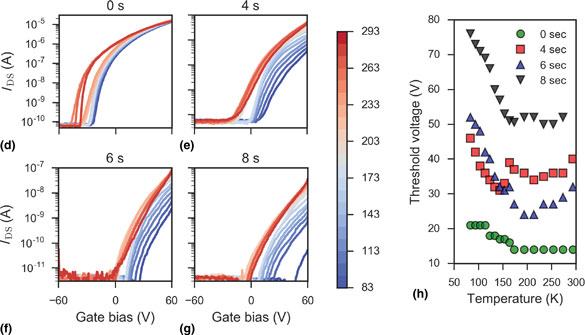Article contents
Low-temperature electrical conduction of plasma-treated bilayer MoS2
Published online by Cambridge University Press: 23 April 2018
Abstract

We report on the low-temperature electrical characterization of bilayer MoS2 treated with increasing dose of oxygen:argon (1:3) plasma. We characterize the effective Schottky barrier heights as a function of plasma exposure time and observe a significant barrier lowering, with no accompanying p-type conduction in the negative bias region. Furthermore, we observe a crossover in the temperature-dependent conduction regimes below 181 K due to the plasma exposure. The Efros–Shklovskii (ES) hopping regime is seen to transform upon plasma exposure to a mixed ES/thermally-activated regime at high temperatures, and to a strongly short-range Arrhenius regime at low temperatures. We attribute the observed crossovers to a critical defect density created by the surface reaction with the plasma.
Information
- Type
- Research Letters
- Information
- Copyright
- Copyright © Materials Research Society 2018
References
- 3
- Cited by


